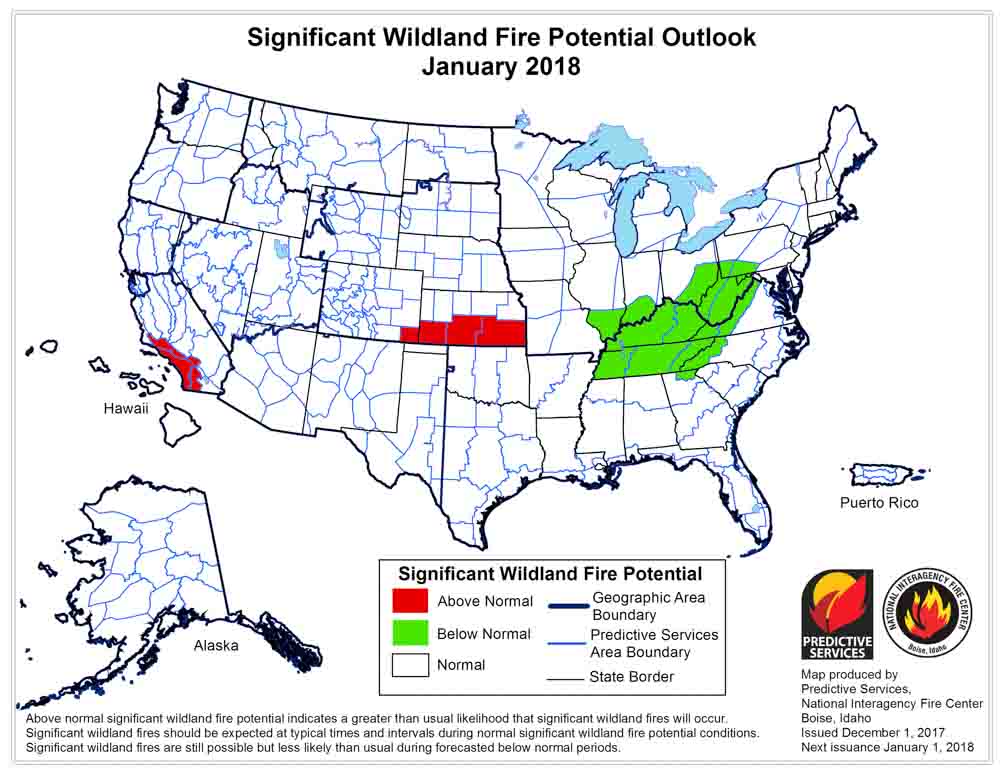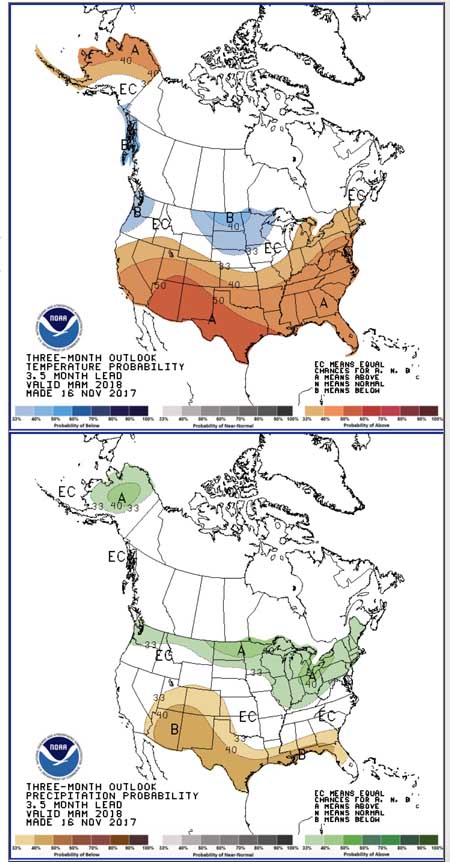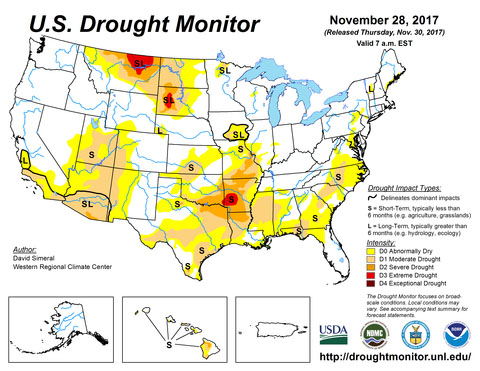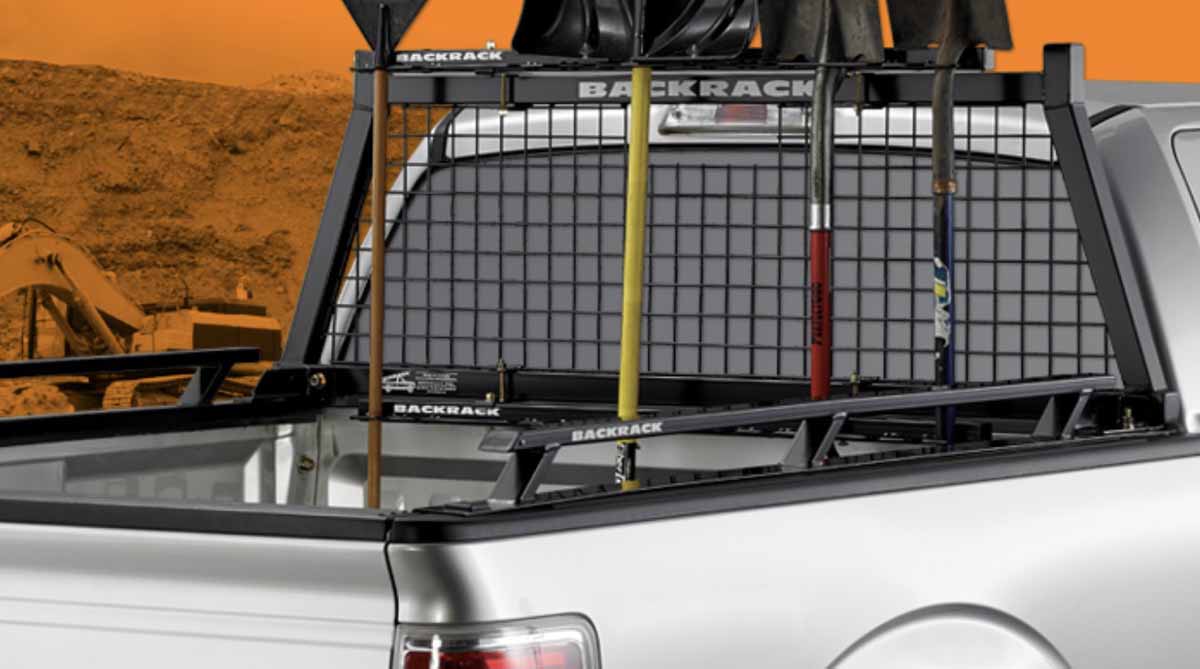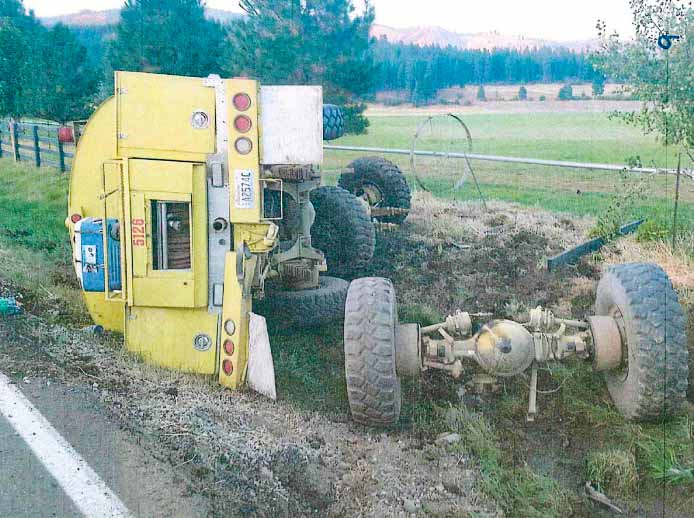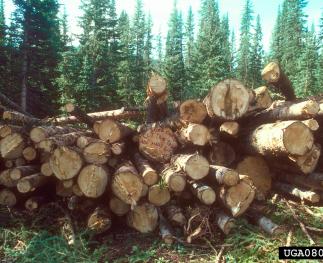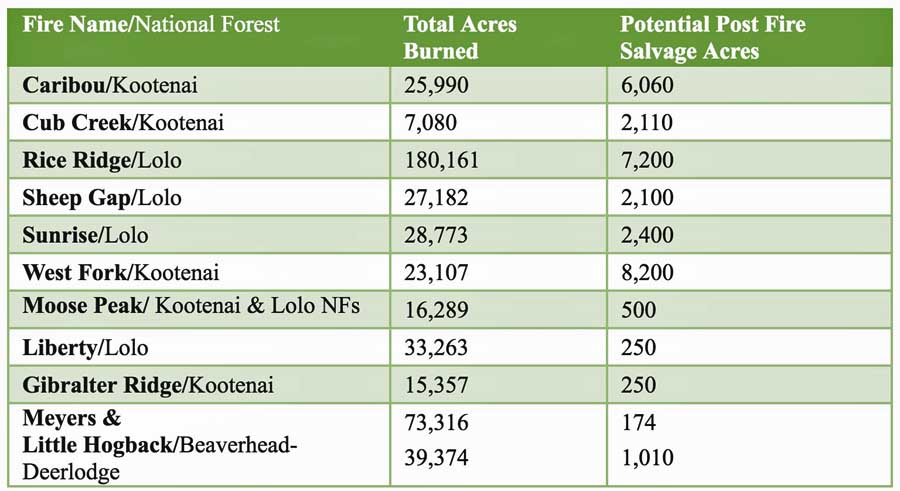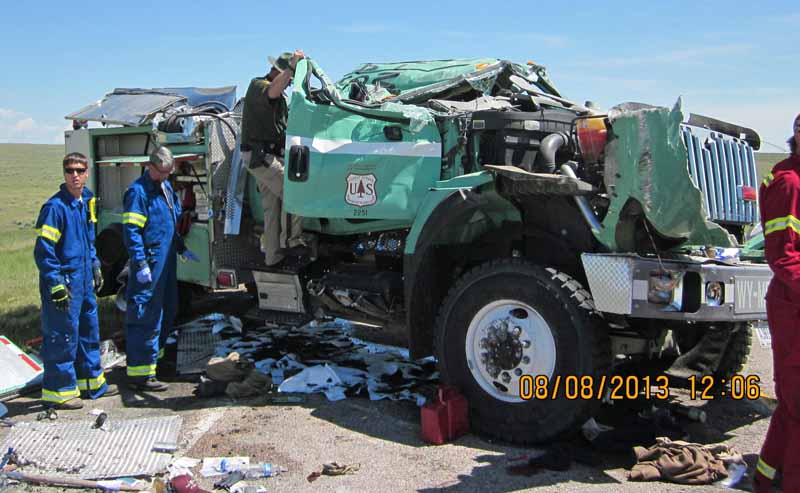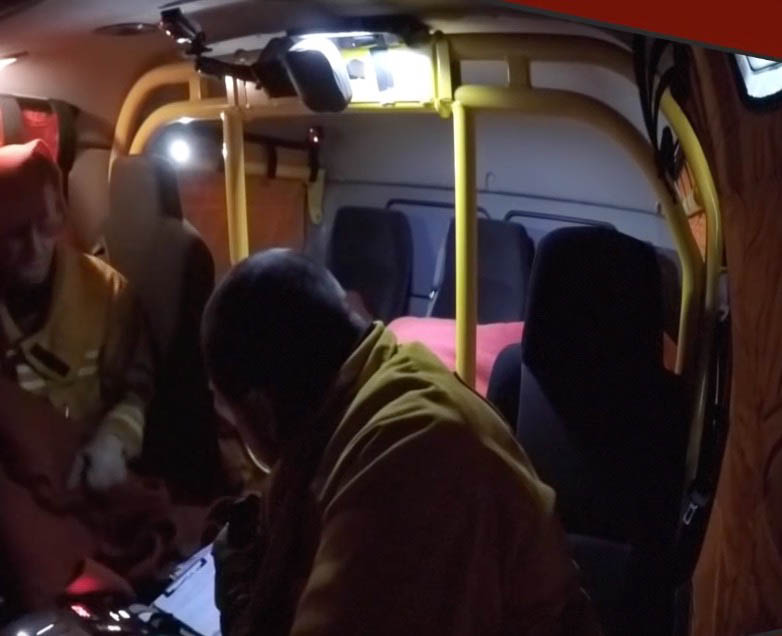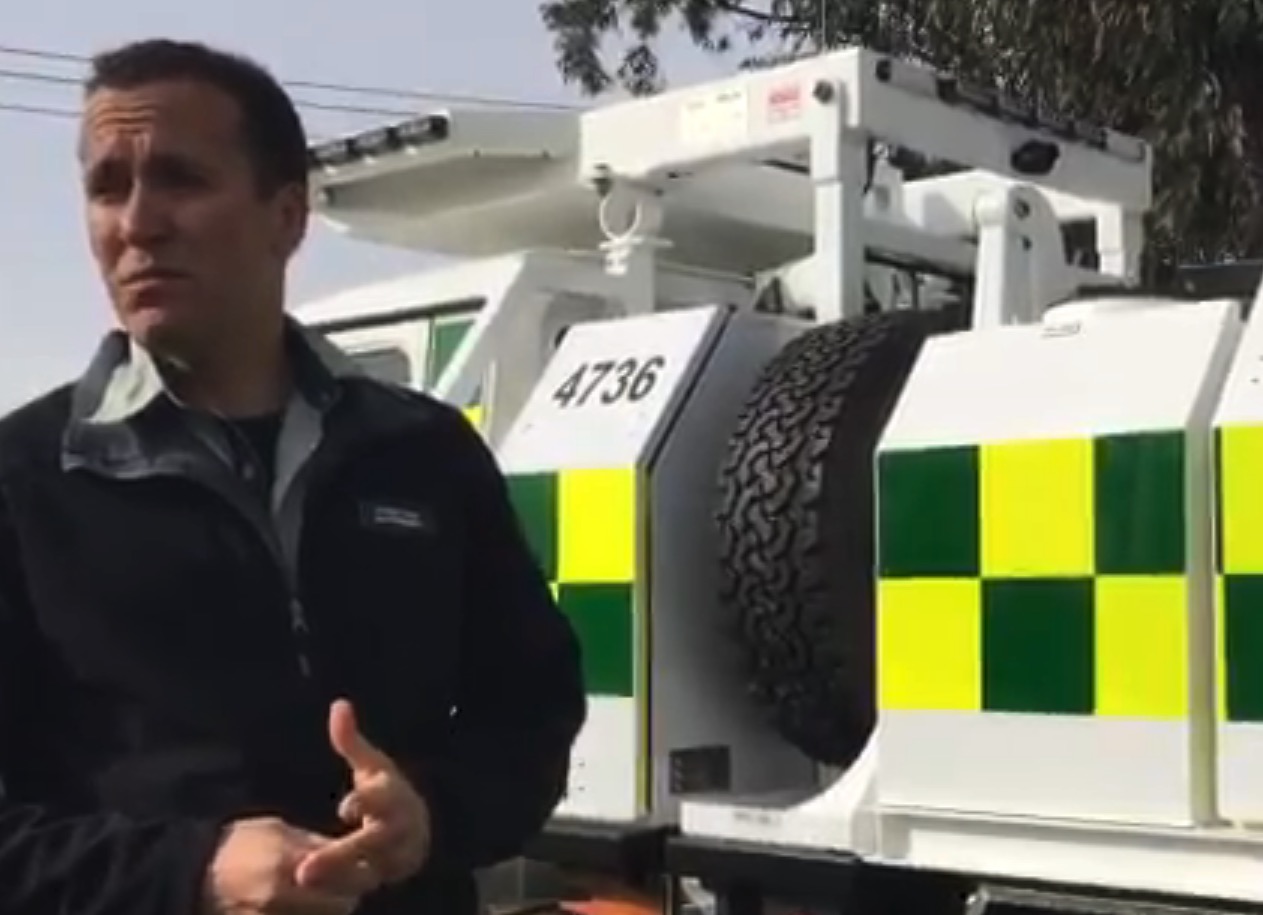Above: wildfire potential for December, 2017.
(Originally published at 8:12 a.m. MDT December 2, 2017)
On December 1 the Predictive Services section at the National Interagency Fire Center issued their Wildland Fire Potential Outlook for December 2017 through March 2018. The data represents the cumulative forecasts of the ten Geographic Area Predictive Services Units and the National Predictive Services Unit.
If the prediction is accurate, Southern California and Southern Kansas should see higher than normal wildfire activity, with increasing potential in New Mexico, Texas, and Oklahoma in the latter part of the period.
Below are:
- The highlights of the NIFC report;
- NIFC’s graphical outlooks;
- NOAA’s long range temperature and precipitation forecasts; and
- Drought Monitor.
“Warm and dry conditions continued across Southern California and the Southwest in November. The wind events observed across Southern California in October ended in early November. Periodic wind episodes in mid-to-late November led to slight increases in fire activity in New Mexico. In the Southeast, the autumn fire season was held in check by the passage of occasional, precipitation-bearing frontal systems that kept fire danger indices from reaching levels similar to what was observed in November 2016. Across the remainder of the country, regions were generally out of fire season as fire activity remained low.
“Temperatures across the Southwest and California were generally above average in November as high pressure off the coast of Baja California dominated. New England also experienced above average temperatures. Alaska experienced temperatures that were well above average for the first half of the month but saw a pattern shift during the middle portion of the month that allowed for below average temperatures to develop. The remainder of the country experienced near average temperatures through the month. Precipitation deficits mounted across the Southwest and Southern California as the weak La Nina-like conditions persisted. The overall dry, westerly flow across the Great Plains also allowed for pockets of drought conditions to emerge. Wetter-than-average precipitation continued across the northwestern portion of the country and across the Great Lakes region. In Alaska, precipitation was near average.
“Latest data shows that the patterns observed in November persisting through the winter months across the nation. Mountain snowpack should be at least near average except across the Southwest where below average snowpack is expected. The potential for above normal snowpack exists from the northern Sierras north to the Canadian border. An elevated potential for significant snowfall also exists across the Great Lakes region. Temperature departures should be stratified with the northern tier of the country experiencing overall colder-than-average temperatures and the southern tier of the country experiencing warmer-than-average temperatures.”


